Up Next

Considering the two hottest young talents in modern F1, Max Verstappen and Charles Leclerc, effectively removed themselves from the silly season by signing multi-year extensions in late 2019, it is remarkable how much driver market upheaval 2020 has brought.
Of the seven top teams in the 2020 constructors’ championship, six will go into the upcoming 2021 campaign with a different line-up. And the seventh, Mercedes, could yet join them, though probably won’t.
But it’s not as if the driver market has been massively stagnant in the years prior, especially for the youth. Arguably most of the breakout F1 drivers from recent years have either already had a go at race-winning machinery (cars that have proven at least occasionally capable of challenging for victories on merit) or are on a clear path to a genuine top team.
Carlos Sainz Jr and Esteban Ocon are your two potential exceptions, but at least Ferrari was still viewed as a frontrunning F1 team when Sainz was signing for it (and is likely to regain that status in the future) and Ocon had previously figured as a genuine contender for a Mercedes F1 drive.
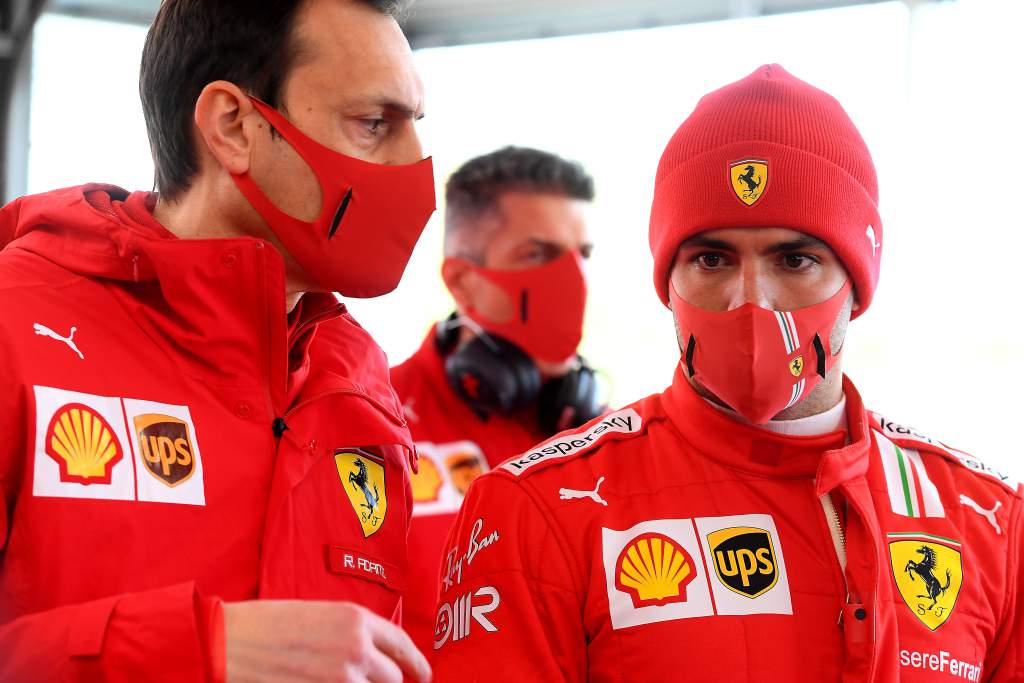
Yet the third exception, Sainz’s now ex-team-mate Lando Norris, stands alone. The driver who stood as the absolute hottest property on the market during his time in junior racing has not really sniffed at free agency in F1, at least publicly. He has been synonymous with McLaren and McLaren alone since his grand prix debut, has not fluttered his eyelashes at any other team and has not been linked to a move away.
Is Norris right to be this sold on McLaren’s ultimate potential?
He came in on a “multi-year” deal and signed a “multi-year” extension midway through his rookie season. This would’ve already taken him beyond the original 2021 date for the new technical regulations, but even though these are now coming in 2022, it seems Norris will not be on the market that year either – his extension having been reported by The Guardian as being through 2022.
If true, that’s a serious commitment, especially to a team that has not won a race since 2012. And while admittedly this did not deter Daniel Ricciardo in signing a two-year deal, this only happened after Ricciardo was passed by for the Ferrari seat for Carlos Sainz Jr. Whereas for Norris, no alternate options have been seriously reported.
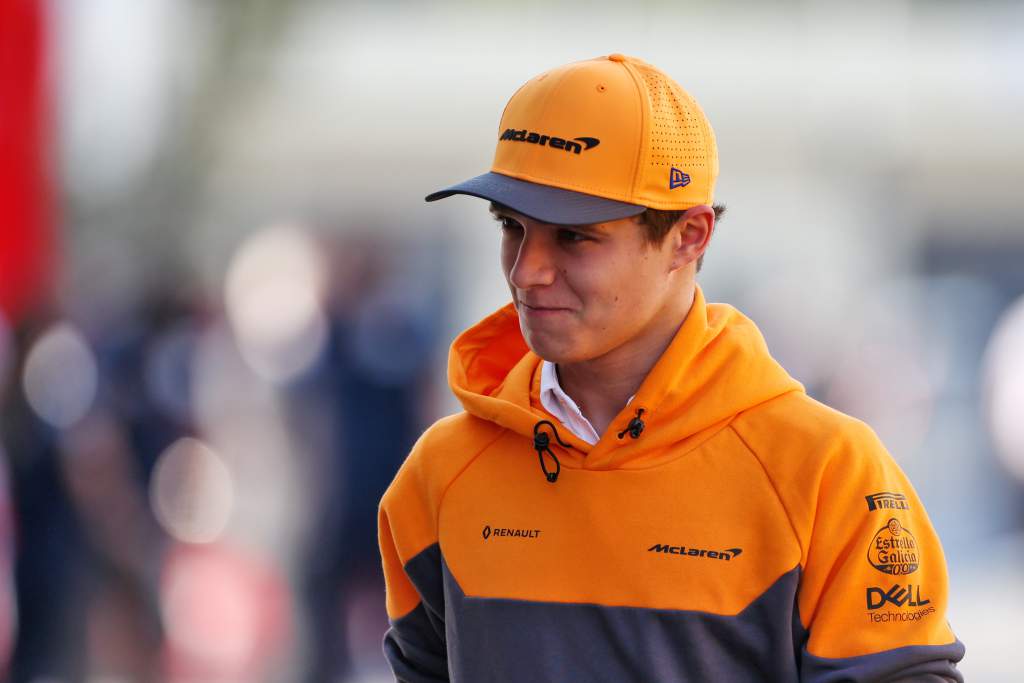
So, isn’t this in some way peculiar? Are the absolute top teams – none of which are immune from needing to future-proof their line-ups – just not interested or convinced, or has he removed himself from the market before they could even come calling? And if so, is Norris right to be this sold on McLaren’s ultimate potential?
The last few paragraphs may come across as somewhat disrespectful to McLaren as a brand, and especially to the new-look team that has been so carefully assembled under Andreas Seidl at Woking. So, for the avoidance of doubt, the point here isn’t that McLaren won’t be a good place to call home in 2021 – in fact, all the signs point at the opposite.
Since Norris’ arrival, McLaren has managed two magnificent seasons, on both occasions snatching the absolute best constructors’ result it could. There’s a clear consensus that its 2020 car was not the third-fastest on the grid, and yet McLaren finished third anyway, despite not exactly having a perfect reliability record.
It also saw off its engine supplier’s works team in the last two seasons, despite Renault showing up to the party with pretty credible driver line-ups on both occasions. Granted, the switch to Mercedes will provide a much tougher benchmark in that regard, but it’s also likely to pay off in outright competitiveness.

In other words, it’s, all in all, a pretty good place to be for your average, or above-average, F1 driver. But is that all Norris is for now, or can he already aim higher?
In a recent interview with Auto Motor Und Sport, Seidl estimated McLaren should only be regularly fighting for wins come 2023. It’s a conservative but realistic look at things, and if Norris has indeed signed through 2022 he will have been aware all the way through that he’s unlikely to end up in truly frontrunning machinery until that deal runs its course.
And in a sense, that’s fine. He’s young enough to wait. But in a different sense, there’s a very good chance that by then the likes of Verstappen, Leclerc, George Russell – effectively his peers – will be fighting for the F1 title.
The fact that Norris doesn’t have as clear a path to that F1 title challenge hearkens back to his pre-F1 decision to join McLaren’s junior programme in early 2017. At that point, he was already a karting world champion, a British F4 champion, a Toyota Racing Series champion and a champion in two separate Formula Renault 2.0 categories. All of that came with the benefit of substantial backing (he comes from wealth) and top machinery but those results are impossible to ignore whatever the circumstances. Simply put, it’s hard to imagine that there is any F1 junior programme worth its salt that wouldn’t welcome him with open arms.
And indeed, Norris acknowledged he had talks with Mercedes, Red Bull, Renault, only for McLaren’s offering to trump all three.
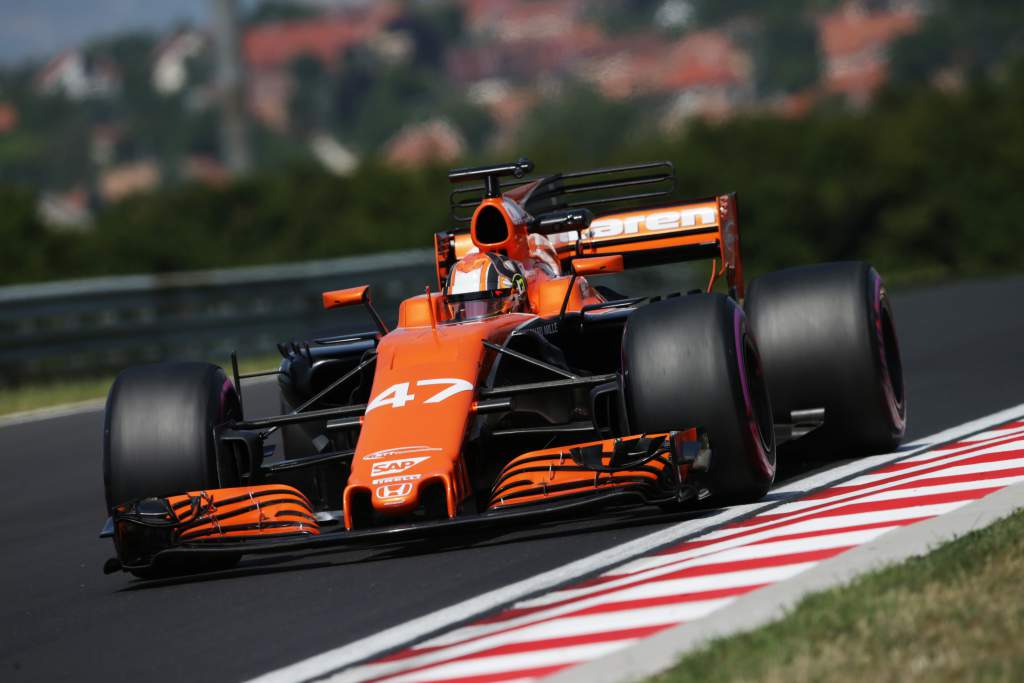
The decision to join forces with McLaren proved to be an objectively solid one. He got an F1 seat at basically the first available opportunity in 2019 – there was no public pressure from Norris to do so, but BBC did report an approach from Toro Rosso and McLaren made it clear that was part of its thinking. And McLaren has now made him an F1 podium finisher – a milestone the vast majority of aspiring racers never get even close to.
But if you look back at his big decision, it’s easy to imagine ways in which he could’ve been even better off. In light of all of Red Bull’s recent driver headaches, it feels intuitively sound that Red Bull junior Norris would’ve been driving the other RB16B alongside Max Verstappen this year. Likewise, a Mercedes junior Norris could’ve probably found himself in the very position Russell has – so, not a podium finisher yet, but in line for the absolute best seat in grand prix racing.
But there’s an entirely different possibility, of course – that Norris’ lack of links to other teams isn’t just because of his tight connection and long-term deal with McLaren, but because the top F1 teams aren’t fully convinced of his potential to be the absolute cream of the crop.
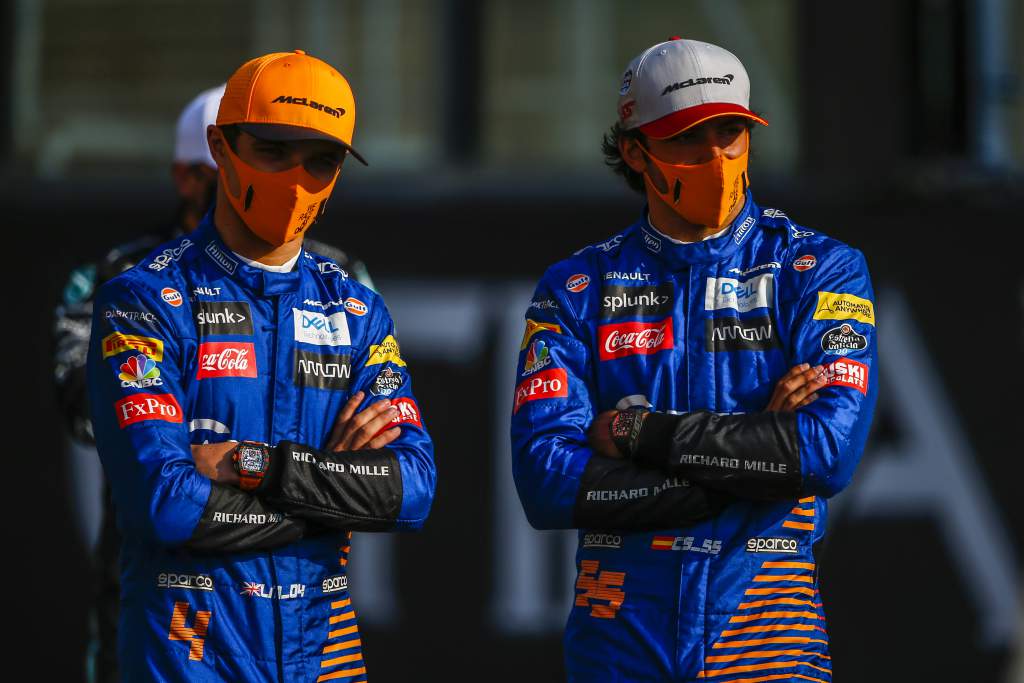
Norris has been tough to benchmark in his time in F1 so far. We can presume from the mere fact of his 2019 promotion that he’d stacked up well against Stoffel Vandoorne and even Fernando Alonso in his FP1 appearances the year prior, but since then Sainz has been the only available reference point.
How Norris has compared versus Sainz
| 2019 | 2020 | Overall | |
| FP ahead* | 20/61 | 21/46 | 41/107 |
| FP gap | +0.235s | ‘+0.010s | +0.123s |
| Q1-2-3 ahead** | 25/47 | 22/45 | 47/92 |
| Q1-2-3 gap | -0.018s | -0.031s | -0.021s |
| Q score*** | 9-9 | 8-8 | 17-17 |
| Q gap*** | +0.036s | +0.001s | +0.019s |
| R ahead | 7/20 | 9/17 | 16/37 |
| R gap | +7.379s | +2.904s | +5.052s |
| Pts/Team pts | 49/145 | 97/202 | 146/347 |
* Trimmed average, with 10 percent each side of the range cut off to avoid outliers
** Only sessions where both set a time
*** Only when directly comparable and representative
Much has been made of the evenly-matched driver line-up being a trump card that propelled McLaren to its two ‘B-class’ championship triumphs of 2019 and 2020 – and though Sainz’s tally alone would’ve been enough to give it fourth place in the former, it is accurate that Norris came up big in seeing off Racing Point and Renault last year.
Sainz comfortably led the team in scoring in their two years as team-mates, which perhaps isn’t an argument in Norris’ favour – for the Spaniard, as effective and entertaining as he’s proven in numerous races of his grand prix career, was earlier seen as disposable by the likes of Renault and Red Bull. And though those decisions may feel a bit dubious in hindsight, they highlight Sainz not being viewed as a top-tier grand prix driver – but rather just a really good one.
And yet, it is also inescapable that by the time Norris had entered F1 Sainz had already accrued some 81 grand prix starts. That is by itself a proper F1 career – it put him comfortably in the top 100 most experienced F1 drivers of all time.
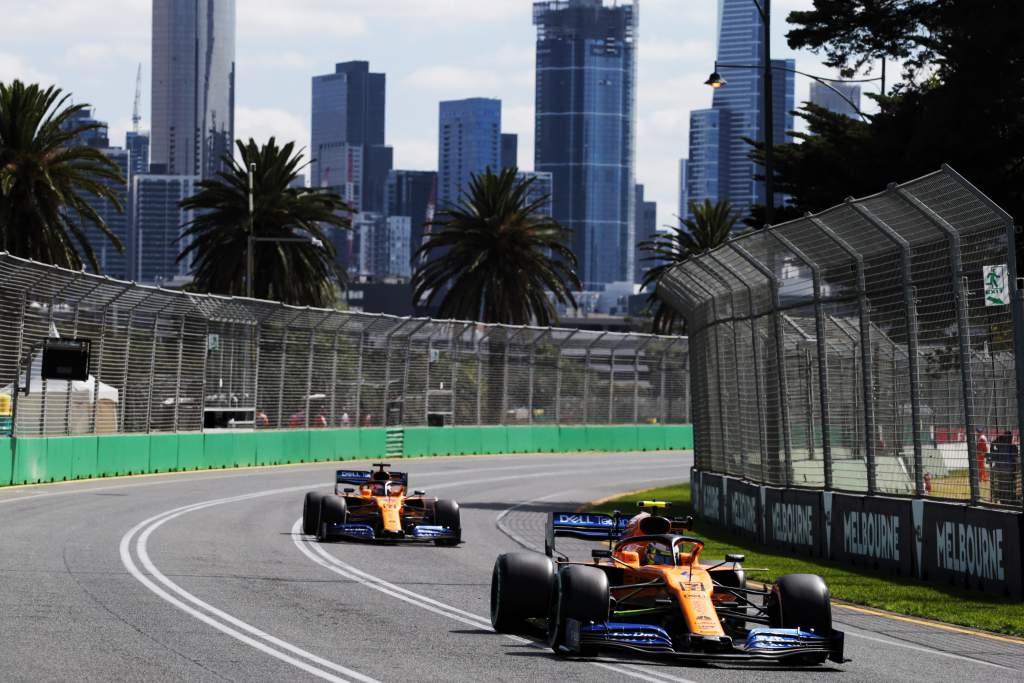
And Norris gave him a bit of a headache right away, particularly over one lap. There has been very little to split the two in pre-race sessions in their two campaigns together at McLaren – with only Sainz’s 2019 practice advantage registering as particularly significant, and probably largely explainable by Norris having to come to grips with circuits that have not featured much in his junior career.
Otherwise, they have largely gone blow for blow, whether in practice (which despite the noise of different run plans a lack of focus on laptime can still be quite indicative of outright pace) or qualifying. And that reflects very well on Norris.
But there are two things don’t reflect so well. The first one is that there’s no clear upward trend for Norris in his head-to-head with Sainz over one lap – as evidenced by five consecutive qualifying defeats in the middle of 2020, it’s hard to say that he really tipped the scales in his favour.
And though in race trim 2020-spec Norris was clearly closer to Sainz than in 2019, he also started from further back, and Sainz still came across as the more assured and incisive Sunday performer. And given the well-documented myriad of reliability and operational problems encountered by the Spaniard’s side of the garage in 2020, the eight-point deficit probably flatters Norris a little, though he himself obviously wasn’t immune either – with the Eifel GP failure the most obvious case in point.
There are plenty of hybrid-era examples of F1’s new faces – your rookies and sophomores – being paired up with an experienced operator. In fact it’s probably the model line-up. And while that’s been the death knell of some F1 careers – see Stoffel Vandoorne facing Fernando Alonso at McLaren, or Jolyon Palmer being taken apart by Nico Hulkenberg at Renault – it’s also contributed to some drivers’ speedy ascent to relevance.

The most obvious recent example is of course Leclerc, who took care of Marcus Ericsson at Sauber and then did enough versus Sebastian Vettel for Ferrari to effectively make Leclerc the new face of its franchise.
What Norris has done in F1 so far isn’t quite as impressive. His most obvious parallel is Esteban Ocon and his time at Force India – matching and even beating the experienced Sergio Perez in qualifying, but being second-best in race trim.
Ocon’s reputation, of course, has now taken a hit due to a Daniel Ricciardo head-to-head, and it is entirely plausible that Norris might be in for the same experience in 2021.
But as it stands, has he really done less than someone like Russell, the heir apparent to a Mercedes F1 seat? Is dominating a long-absent, limited-mobility Robert Kubica and rookie Nicholas Latifi more impressive than holding your own against Sainz? Maybe. Maybe not. But maybe – most likely – teams like Mercedes and Red Bull haven’t had to make that judgment because Norris hasn’t been on the market.
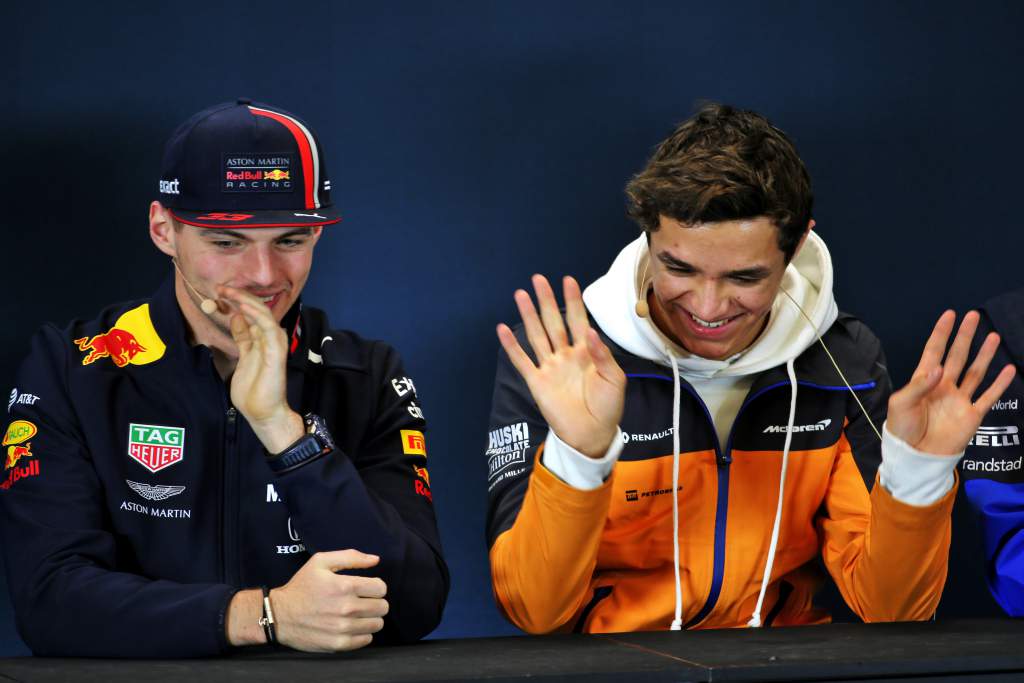
Now, if he somehow is available for 2022, and goes decently well against Ricciardo, the two hybrid-era heavyweights should give Norris some serious thought. And not just because his junior career and F1 career so far suggests a massive upside, but because there’s a good chance he’s still nowhere near his peak version.
After all, this year, Norris will still be the second-youngest driver on the grid, beaten by only Yuki Tsunoda. And if age is just a number, there’s also the fact he’s still a relative newcomer, by F1 standards, to formula racing.
Every F1 2021 driver’s first major single-seater race
| Driver | Date | Event |
| Yuki Tsunoda | August 27, 2016 | Japanese F4 at Suzuka |
| Mick Schumacher | April 25, 2015 | German F4 at Oschersleben |
| Lando Norris | April 4, 2015 | British F4 at Brands Hatch |
| Nikita Mazepin | October 17, 2014 | MRF Challenge at Losail |
| Charles Leclerc | April 5, 2014 | Formula Renault 2.0 Alps at Imola |
| George Russell | April 5, 2014 | Formula Renault 2.0 Alps at Imola |
| Max Verstappen | January 26, 2014 | Florida Winter Series at Sebring |
| Lance Stroll | January 26, 2014 | Florida Winter Series at Sebring |
| Antonio Giovinazzi | June 17, 2012 | Formula Pilota China at Shanghai |
| Esteban Ocon | March 24, 2012 | Formula Renault 2.0 Alps at Monza |
| Nicholas Latifi | January 21, 2012 | Skip Barber Formula 2000 at Homestead-Miami |
| Pierre Gasly | April 9, 2011 | French F4 at Ledenon |
| Carlos Sainz | April 3, 2010 | Formula BMW Pacific at Sepang |
| Valtteri Bottas | May 28, 2007 | Formula Renault 2.0 NEC at Zandvoort |
| Daniel Ricciardo | July 10, 2005 | Western Australia Formula Ford at Barbagallo |
| Sergio Perez | March 17, 2004 | Skip Barber Nationals at Sebring |
| Sebastian Vettel | April 26, 2003 | Formula BMW ADAC at Hockenheim |
| Lewis Hamilton | November 11, 2001 | Formula Renault UK Winter Cup at Rockingham |
| Kimi Raikkonen | April 5, 1999 | Formula Renault 2.0 UK at Donington |
| Fernando Alonso | March 27, 1999 | Euro Open by Nissan at Albacete |
Norris did have a year in BTCC-supporting Ginetta Juniors in 2014, but he was still karting at that time. His formula career began in earnest only a year later – so a year after Leclerc’s, Russell’s, Verstappen’s.
Those three have all already proven, to varying degrees, that they can run up front in F1. Norris hasn’t had the chance yet – and if he stays at McLaren for the next two years, chances are he’ll have to wait a while longer.
At the same time, there’s reason to believe McLaren will reach those heights again eventually. Maybe Norris just wants to be there when it happens.





